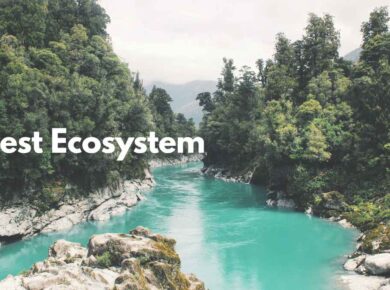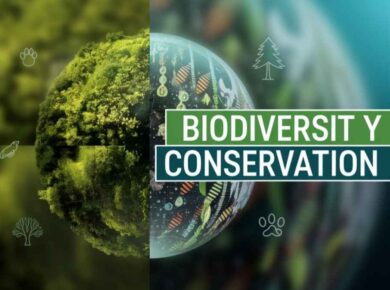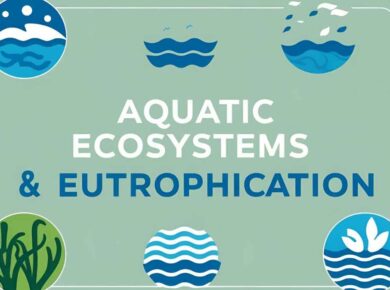Carbon Sources & Sequestration
Carbon sink & source
A carbon sink is anything that absorbs more carbon that it releases, while a carbon source is anything that releases more carbon than is absorb
- Forests, soils, oceans and the atmosphere all store carbon and this carbon moves between them in a continuous cycle. This constant movement of carbon means that forests act as sources or sinks at different times.
- Natural sinks → Oceans (Largest on earth) + Photosynthesis by plants
- Artificial sinks → Landfills + Carbon capture and storage proposals
- Oceans are the largest active carbon sink on Earth, absorbing more than a quarter of the carbon dioxide that humans put into the air.
Carbon Sequestration
- long-term storage of carbon dioxide to mitigate global warming & avoid dangerous climate change
- proposed as a way to slow the atmospheric and marine accumulation of greenhouse gases
- includes carbon capture and storage, which refers to large-scale, permanent artificial capture & sequestration of industrially produced CO2 using
- Subsurface saline aquifers
- Reservoirs
- Ocean water
- Aging oil fields or other carbon sinks
Geological sequestration / storage (Carbon Sink)
The method of geo-sequestration or geological storage involves injecting carbon dioxide directly into underground geological formations for ex :
- Declining oil fields
- Saline aquifers
- Unminable coal seams
- CO2 has been injected into declining oil fields for more than 40 years, to increase oil recovery
- CO2 is soluble in oil hence lowers viscosity of the oil & reduces its interfacial tension which increases the oils mobility.
- Salty water contained in deep saline aquifers is not suitable for drinking or agriculture, making saline aquifers an ideal large-scale storage solution for large stationary industrial CO2 emitters.
- Unminable coal seams can be used to store CO2, because CO2 absorbs to the coal surface, ensuring safe long-term storage.
- In this process it releases methane that was previously adsorbed to the coal surface and that may be recovered, & Again the sale of the methane can be used to offset the cost of the CO2 storage
Carbon credit
- Any tradable certificate representing the right to emit one tonne of carbon dioxide or the mass of another greenhouse gas equivalent to one tonne of carbon dioxide
- Carbon credits and carbon markets are a component of national and international attempts to mitigate the growth in concentrations of greenhouse gases (GHGs)
- One carbon credit is equal to one tonne of carbon dioxide, or in some markets, carbon dioxide equivalent gases.
- Carbon offsetters purchase the credits from an investment fund or a carbon development company that has aggregated the credits from individual projects
- Buyers and sellers can also use an exchange platform to trade, such as the Carbon Trade Exchange, which is like a stock exchange for carbon credits
- China is currently the largest seller of carbon credits controlling about 70% of the market share with India at second place with 20% market share
- MCX has become the first exchange in Asia to trade carbon credits
Carbon offset
- A carbon offset is a reduction in emissions of carbon dioxide or greenhouse gases made in order to compensate for or to offset an emission made elsewhere
- Carbon offsets are measured in metric tons of carbon dioxide-equivalent (CO2e) and may represent six primary categories of greenhouse gases: carbon dioxide (CO2), methane (CH4), nitrous oxide (N2O), perfluorocarbons (PFCs), hydrofluorocarbons (HFCs), and sulfur hexafluoride (SF6)
- One carbon offset represents reduction of one metric ton of carbon dioxide or its equivalent in other greenhouse gases
Carbon tax
- a tax based on greenhouse gas emissions (GHG) generated from burning fuels
- Basically a tax on fossil fuels, especially those used by motor vehicles, intended to reduce the emission of carbon dioxide
- puts a price on each tonne of GHG emitted, sending a price signal
- India Doesn’t like it & is against carbon tax from goods imported from India to other countries











